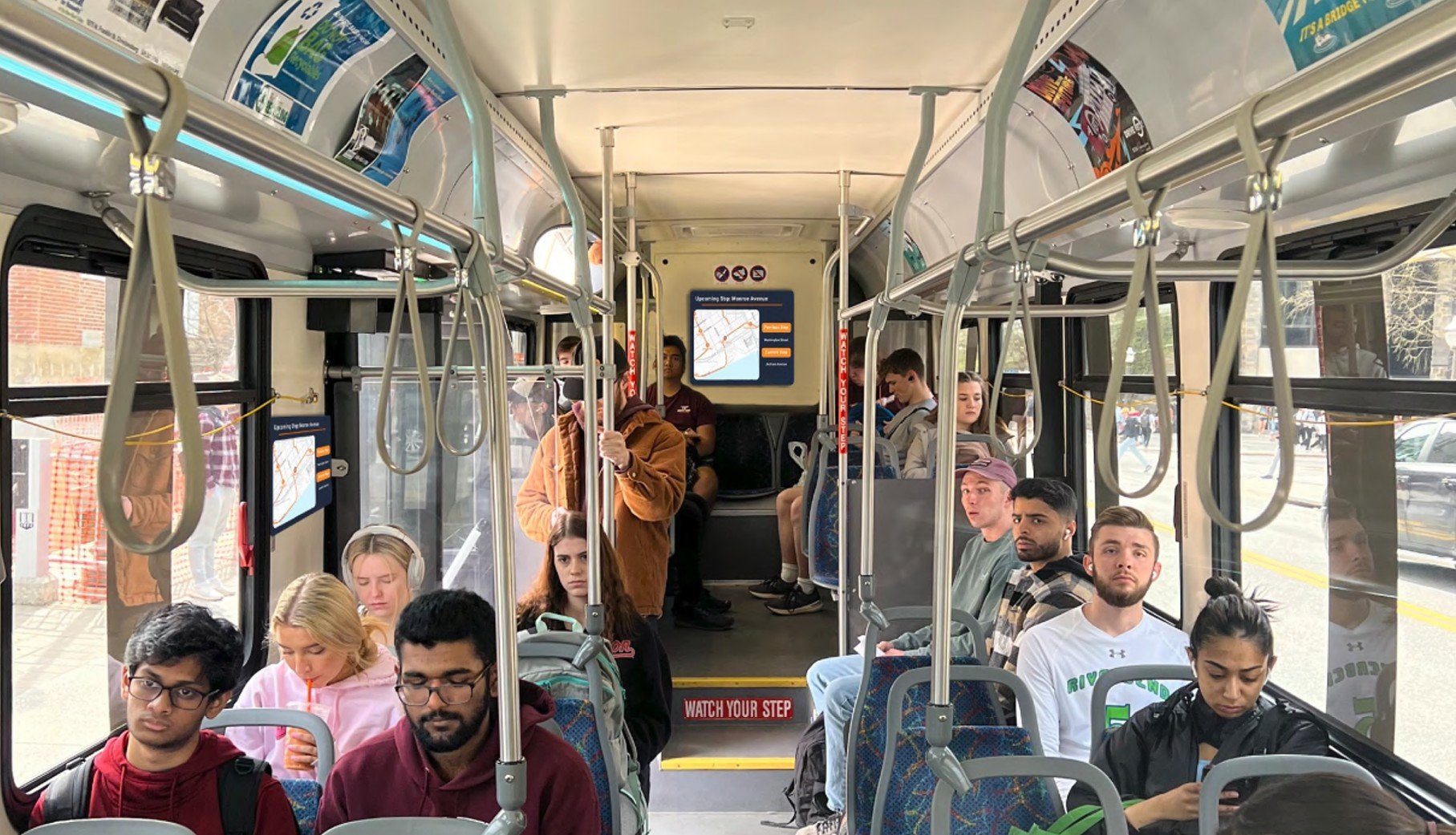OnQuest
The accessible and additive bus solution
Did You Know?
While public buses and all other forms of transportation can help shrink a city and make it more accessible and traversable for its residents, some people can still struggle with accessing and using a public bus system. Due to unreliable signage and announcements, people who are deaf or hard of hearing can struggle navigating the public bus system.
Final Product
The Problem
First Steps
Seat Screen
On many public bus systems, visual aids are often either broken or not viewable from all parts of the bus. How do we rectify this so people can easily access and use public buses regularly? My team of three other classmates and I were tasked with solving this problem.
Our first steps were conducting user-based research to ascertain the best solution to making the public bus system more accessible.
Haptic Sensor
After getting feedback from potential users and discussing the validity of our initial designs, we settled on an App Notification System. As a team, we felt that this solution could help the most people and also be easily integrated into any public bus system in the U.S.
Hearing Aid Charging Port
Stadium Screen
Phone Notification System
Prototype
OnQuest is a user interface designed for ease of use for all consumers. It allows potential users to schedule stops easily, check on schedules and live map updates, as well as a messaging and emergency stop system that allows you to directly communicate with drivers
Stop Selector
Seat Screens
Text System
The In-bus communication screens allow people to interact with the OnQuest system who may not have a phone, providing updates and visual updates for all passengers. The driver screen also allows the driver to communicate with passengers as well as provide live updates.


















